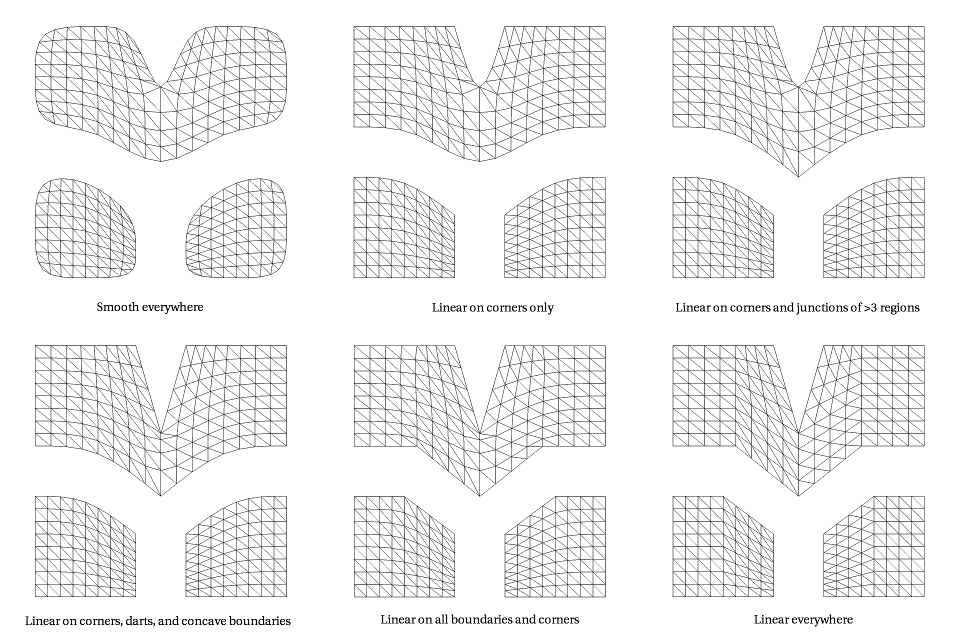...
This idea of boundary interpolation can also be extended to the interpolation rules applied when dealing with data over the surface, most notably texture coordinates (in this context, RenderMan uses the term facevarying boundary interpolation). When dealing with the seams between disjoint UV regions, the renderer can use several different rules, trading off smoothness of the subdivided result away from the seams against the desire to interpolate the seams exactly. Note that no matter what rule is chosen, the UV texture map editor must also abide by the same rules, otherwise undesirable texturing artifacts will result. The following image demonstrates the different rules applied to a 4x4 grid of quads segmented into three UV regions.
The "interpolateboundary" tag controls how interpolation boundary face edges are interpolated. This tag has one optional integer argument and zero floating-point arguments. If the integer argument is not specified it is assumed to have a value of 1. A value of 0 specifies that no boundary interpolation behavior should occur (the default behavior when this tag is not specified). A value of 1 indicates that all the boundary edge-chains are sharp creases and that boundary vertices with exactly two incident edges are sharp corners. A value of 2 indicates that all the boundary edge-chains are sharp creases; boundary vertices are not affected.

